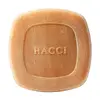What's inside
What's inside
 Key Ingredients
Key Ingredients

No key ingredients
 Benefits
Benefits

 Concerns
Concerns

 Ingredients Side-by-side
Ingredients Side-by-side

Water
Skin ConditioningCocamidopropyl Betaine
CleansingSodium Hydroxypropyl Starch Phosphate
AbrasiveLauric Acid
CleansingSodium Lauroyl Glycinate
CleansingSodium Lauroyl Isethionate
CleansingHydrogenated Soybean Oil
EmollientGlycine Soja Oil
EmollientSodium Chloride
MaskingGlycerin
HumectantParfum
MaskingStearic Acid
CleansingPalmitic Acid
EmollientPhenoxyethanol
PreservativeGuar Hydroxypropyltrimonium Chloride
Skin ConditioningCitric Acid
BufferingBHT
AntioxidantTetrasodium EDTA
Iodopropynyl Butylcarbamate
PreservativeLinalool
PerfumingLimonene
PerfumingHexyl Cinnamal
PerfumingCoumarin
PerfumingCitronellol
PerfumingBenzyl Alcohol
PerfumingAlpha-Isomethyl Ionone
PerfumingWater, Cocamidopropyl Betaine, Sodium Hydroxypropyl Starch Phosphate, Lauric Acid, Sodium Lauroyl Glycinate, Sodium Lauroyl Isethionate, Hydrogenated Soybean Oil, Glycine Soja Oil, Sodium Chloride, Glycerin, Parfum, Stearic Acid, Palmitic Acid, Phenoxyethanol, Guar Hydroxypropyltrimonium Chloride, Citric Acid, BHT, Tetrasodium EDTA, Iodopropynyl Butylcarbamate, Linalool, Limonene, Hexyl Cinnamal, Coumarin, Citronellol, Benzyl Alcohol, Alpha-Isomethyl Ionone
Gum Base
Honey
HumectantWater
Skin ConditioningMyristic Acid
CleansingPalmitic Acid
EmollientPEG-3/PPG-2 Glyceryl/Sorbitol Hydroxystearate/Isostearate
EmulsifyingSqualane
EmollientIsostearic Acid
CleansingZea Mays Germ Oil
EmollientGlycyrrhizic Acid
HumectantSimmondsia Chinensis Seed Oil
EmollientParfum
MaskingCobalt Titanium Oxide
Skin ConditioningMica
Cosmetic ColorantEtidronic Acid
 Reviews
Reviews

Ingredients Explained
These ingredients are found in both products.
Ingredients higher up in an ingredient list are typically present in a larger amount.
Palmitic Acid is a fatty acid naturally found in our skin and in many plant and animal sources. In cosmetics, it is usually derived from palm oil. It serves many purposes in skincare, acting as a cleanser, emollient, and emulsifier.
As an emollient, palmitic acid helps soften and smooth the skin by preventing water loss. In cleansers, it helps remove oil and dirt while creating foam.
Its emulsifying properties help stabilize products by keeping water and oil-based ingredients from separating.
This may not be suitable for fungal acne-prone skin, as fatty acids like this can sometimes trigger breakouts in sensitive individuals.
Learn more about Palmitic AcidParfum is a catch-all term for an ingredient or more that is used to give a scent to products.
Also called "fragrance", this ingredient can be a blend of hundreds of chemicals or plant oils. This means every product with "fragrance" or "parfum" in the ingredients list is a different mixture.
For instance, Habanolide is a proprietary trade name for a specific aroma chemical. When used as a fragrance ingredient in cosmetics, most aroma chemicals fall under the broad labeling category of “FRAGRANCE” or “PARFUM” according to EU and US regulations.
The term 'parfum' or 'fragrance' is not regulated in many countries. In many cases, it is up to the brand to define this term.
For instance, many brands choose to label themselves as "fragrance-free" because they are not using synthetic fragrances. However, their products may still contain ingredients such as essential oils that are considered a fragrance by INCI standards.
One example is Calendula flower extract. Calendula is an essential oil that still imparts a scent or 'fragrance'.
Depending on the blend, the ingredients in the mixture can cause allergies and sensitivities on the skin. Some ingredients that are known EU allergens include linalool and citronellol.
Parfum can also be used to mask or cover an unpleasant scent.
The bottom line is: not all fragrances/parfum/ingredients are created equally. If you are worried about fragrances, we recommend taking a closer look at an ingredient. And of course, we always recommend speaking with a professional.
Learn more about ParfumWater. It's the most common cosmetic ingredient of all. You'll usually see it at the top of ingredient lists, meaning that it makes up the largest part of the product.
So why is it so popular? Water most often acts as a solvent - this means that it helps dissolve other ingredients into the formulation.
You'll also recognize water as that liquid we all need to stay alive. If you see this, drink a glass of water. Stay hydrated!
Learn more about Water